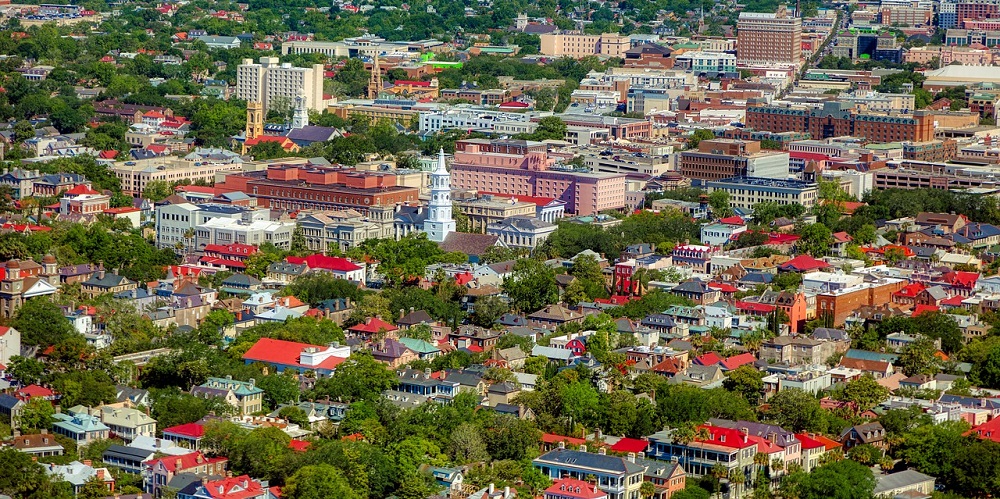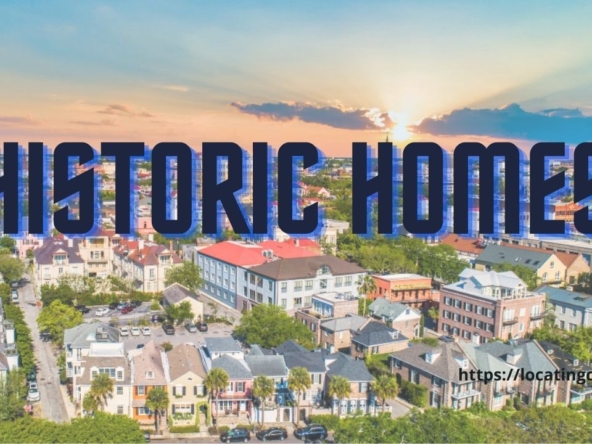8 Charleston Historical Facts You Probably Didn’t Know
While it’s no surprise that Charleston, SC, is one of the most beautiful and historic cities in the United States, you may not know that some of these Charleston historical facts are pretty surprising and fun to learn!
1) Did you know that there are over 90 churches in Charleston?
In Charleston, a church is never far away. There are over 90 churches in Charleston, and that’s not even counting synagogues and other places of worship. The number of churches in Charleston can get overwhelming — but it’s also part of what makes Charleston so unique. The city has a long and rich history of religious activity; we have impressive old buildings like St. Philip’s Church (which dates back to 1751) and incredible new ones like First Congregational Church (which opened only eight years ago). You can find historical facts about Charleston churches — many with fascinating stories — and you won’t want to miss out on these little-known facts about churches in Charleston! Charleston Historical facts.
2) Did you know that Colonel William Bull laid out over 100 miles of streets?
The city of Charleston was founded in 1670 by English settlers, but it wasn’t until 1712 that they decided to start building their streets. Charleston is one of only two cities in America (the other being Savannah) where all main roads are laid out with a north-south orientation, even if they don’t run that way geographically. The reason for these unique streets dates back to its founding when Colonel William Bull began laying out 120 miles of streets based on a grid pattern. Except for four pesky exceptions. These roads—Queen Street, King Street, Meeting Street, and Calhoun Street—strayed from Bull’s plan because he believed following geographic topography made more sense.
3) Did you know that the city’s first settler, Dr Thomas Gadsden, was its first murderer?
Historians have determined that Dr Gadsden killed an Indian man who had been on good terms with his fellow colonists. The identity of Charleston’s first murder victim, and details of why they killed him, are lost to history, but we know that Gadsden used a gun to pull off what would now be considered a cold-blooded execution. In those days, No one got in trouble for killing Indians. It was encouraged—but if you’re curious about Charleston’s early murderous past, look no further than its first permanent resident. (Side note: Despite his violent beginnings in America’s most picturesque city, Gadsden became wealthy and influential.)
4) Did you know that King George III stayed at what is now known as White Point Gardens?
At White Point Gardens King George III of England once stayed. The same house where he stayed still stands today. Stroll through these beautiful gardens in a peaceful setting that’s sure to relax and calm even those of us who are most excited about visiting Charleston. Be sure to stop by while in town! It’s worth it. You built Charleston Plantations on rice production. If you’re into history, then chances are good that you know all about rice plantations.
Talk about another dark part of Charleston’s history!
It wasn’t until 1964 that banned segregation. In some ways, it seems complicated to believe we ever lived in a time when separate water fountains for white people and black people existed. But alas, such was life for much longer than we would have liked.
5) Did you know that the last Civil War battle occurred on James Island?
Charleston saw its fair share of military action during both World Wars, but perhaps its most exciting historical moment occurred during a smaller conf. Troops under General William T. Sherman pushed back confederates near Pocotaligo on May 20, 1865 – four days after Lee’s surrender at Appoma tox. Betsy Ross never lived in Charleston?: According to legend, Betsy Ross sewed our nation’s first flag while sitting at her family’s dining room table.
Though it’s widely believed that Betsy didn’t live anywhere near South Carolina, there is an unconfirmed report of her living briefly in nearby North Charleston around 1774-1775. Whether or not she made our nation’s first flag, Betsy is known for being quite handy with a needle and thread – many will recognize her as the seamstress of American independence. She also shares several namesakes throughout South Carolina (including counties) – including downtown’s Betsy Ross House Museum. Charleston historical facts.
6) Did you know that Charleston was not incorporated adequately until 1783?
King George III signed the Charleston’s Incorporation Act and made Charleston South Carolina’s first chartered city. It is also one of America’s oldest cities. Charleston has a rich history, so you should take some time to learn more about it. Here are 8 Charleston historical facts that you probably didn’t know. Charleston offers much more than just shopping, dining, and events.
0-7) Did you know that William Wallace was born in Scotland and moved to Charleston when he married Anne Ay ett? They settled on Sullivan’s Island, where they lived for five years before returning to Scot. Today, you can tour Wallace House on your own or with a guide through Heritage Tours of Charleston.
7) In 1838, John C. Calhoun and his wife Floride purchased Fort Johnson on Sullivan’s Island and renamed Fort Marion after Florida’s then-governor?
Here are a few interesting facts about Fort Joh, son. While much of it is unknown, we know that John C. Calhoun and his wife Floride purchased Fort Johnson on Sullivan’s Island and renamed Fort Marion after Florida’s then-governor in 1838. Turned it into an orphanage for girls in 1913. And a Catholic high school called Saint Gabriel’s operated there from 1947 until 1976. When they built a new campus in Mount Pleasant, leaving behind two old dormitories at Fort Joh, son. Charleston Historical Facts.




